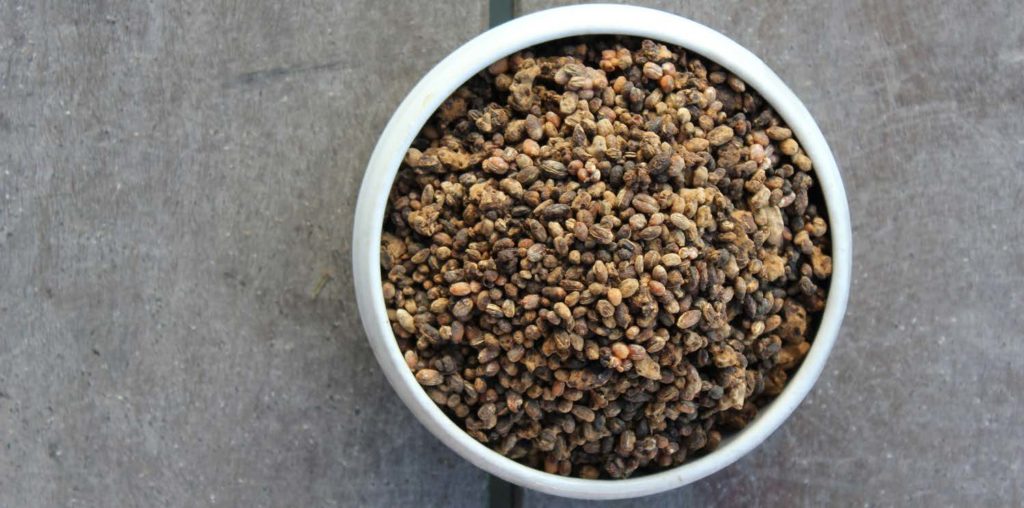by Josh Evans
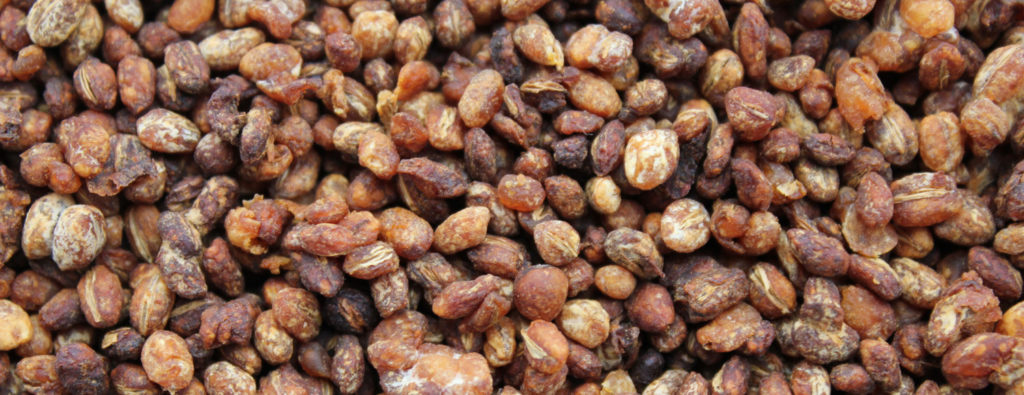
Finished koji smells amazing. It is fruity and floral, with an underlying hint of fresh mushrooms. And it changes depending on the substrate: rice and quinoa give a nuttier aroma, sunflower seeds and buckwheat are more earthy, and beans give a smell that is entirely savoury.
At the beginning of this year, we began thinking of how we could broaden this flavour spectrum even further. Maybe it was the zeitgeist in our little family at the time – Rosio in the noma test kitchen began to roast the koji and it gained an entirely different flavour profile. When we began doing the same on the boat, our first method was to roast the loose grains at 160˚C for 30-40 minutes. The koji became deep and rich, with aromas reminiscent of chocolate, coffee, caramel, and toast. Some of our trials retained hints of their original fruity and floral aromas. The potential was great.
We began treating this new ingredient in a similar way to its flavour companions.
Taking Rosio’s lead, we infused it into cream (1 part koji : 2 parts cream) overnight, and passed the thickened mixture through a sieve the next day which yielded a rich, ganache-like substance.
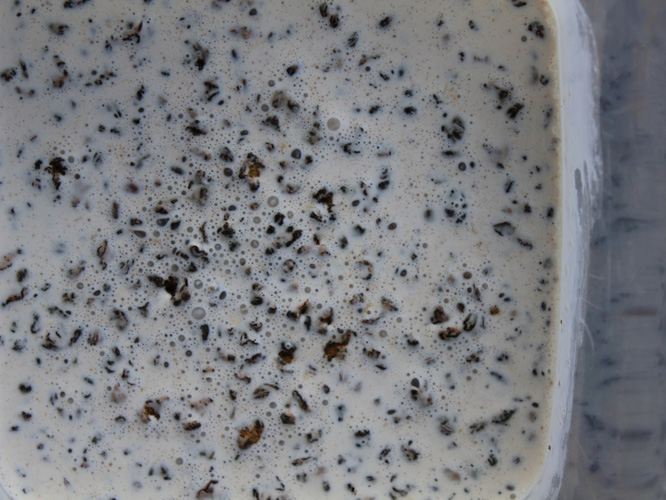
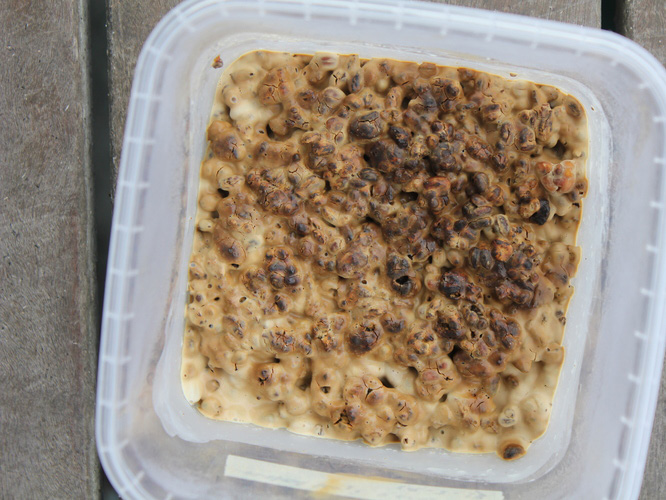

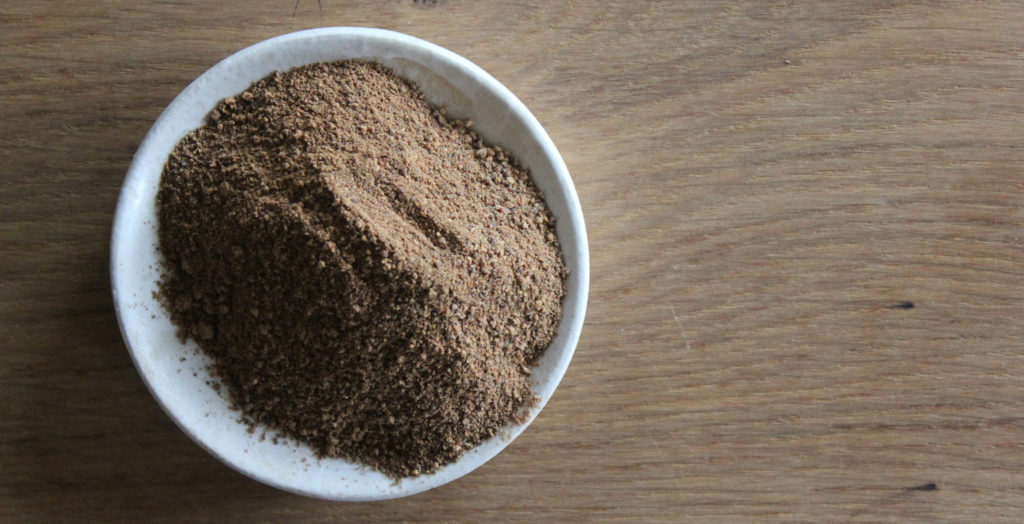
We brewed the ground grains into coffee (more work is needed). We stirred some fine powder into heated milk and chocolate for a more complex cocoa (admittedly more of a treat than an experiment).
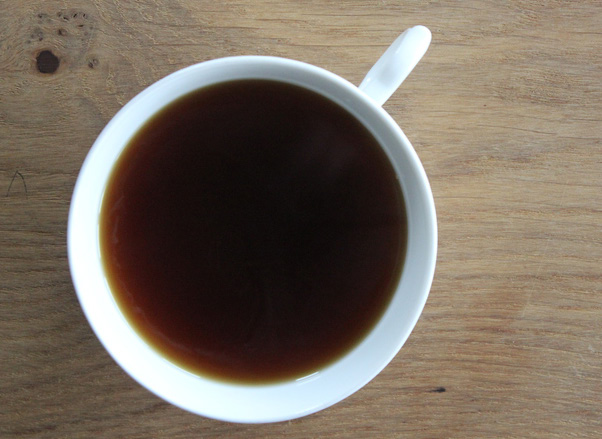
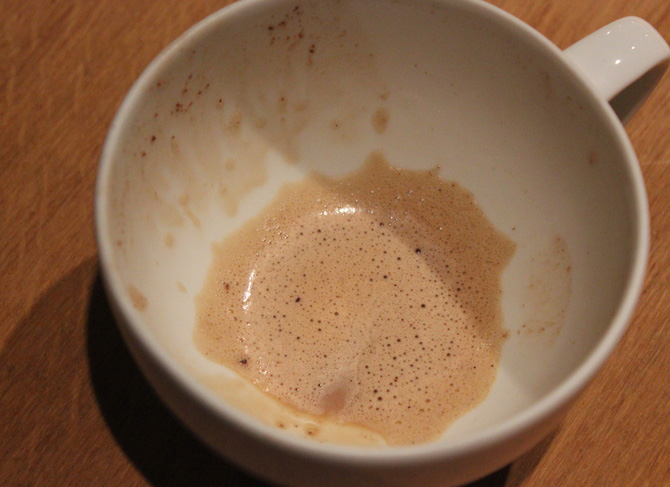
Over at noma, it has found its way into a variety of dishes and projects, from the Potatoes and Bleak Roe to the Seaweed Danish. Definitely a versatile ingredient.
It also became a crucial pairing with pork’s blood in many of our intern Elisabeth’s recipes for blood as an egg substitute in baking. The minerality of the blood meshes well with the caramel and Maillard notes of the roasted koji, and one of the successes of that project (in my eyes at least) was a recipe for ‘chocolate’ ice cream with blood, roasted koji, no chocolate, and no eggs. Details forthcoming.
The similarity to malt was undeniable, and Ben started using it to make syrup extracts and to brew beer. At first, the beer trials seemed to lack body, but after some months of aging they are starting to develop into something quite good. We’ll be taking this one further for sure. In the meantime, here’s our first recipe.
Ben’s Toasted Koji Pale Ale
Statistics
Volume: 28 L
OG: 1050
FG: 1025
Alcohol: 3.3% but we had problems with attenuation
IBU 39
BU/GU 0.78
Fermentables
Maris Otter Pale Malt 5634g
Roasted Koji 1000g
Mash schedule:
6668°C / 60 minutes, 71°C / 35 minutes (during continuous sparge)
Hops
Summit 17.4% alpha 20g 90 minutes
Saaz 4.4% alpha 33g 15 minutes
East Kent Golding 5.85% alpha 16g 10 minutes
East Kent Golding 5.85% alpha 22g 5 minutes
Fermentation
Yeast: WLP500 Trappist Ale
Fermented at 18 degrees C for 30 days.
Bottled conditioned with 7g/L of sugar although still quite dense
Needs time in the bottle to improve.
Notes
We are not experts in beer making, and so working out how much roasted koji to put in this recipe was really just instinct; however, the result is good. There are problems with attenuation, like how much sugar is left in the beer, but the taste is good, and improving with age.
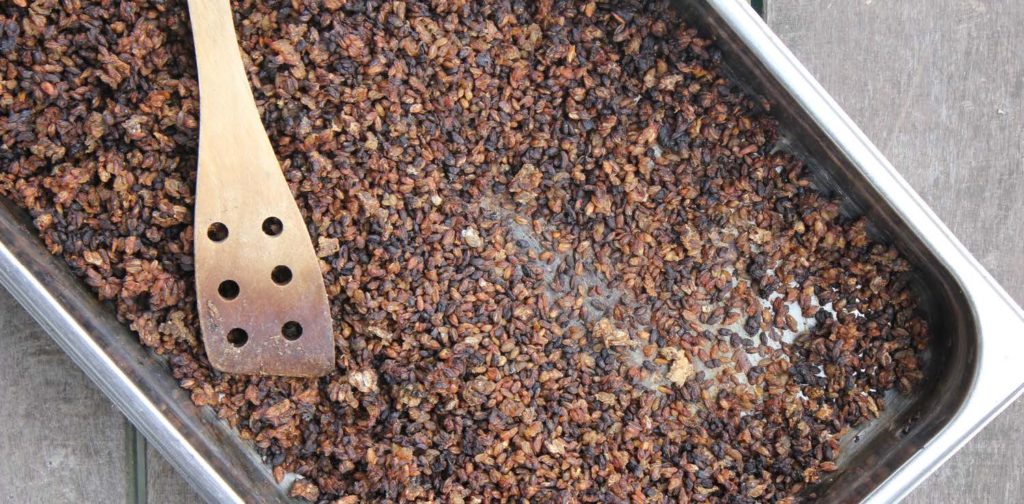
We recently became more curious about the roasting process and decided to go back to basics to better understand our options, creating a sensory trial with samples varying temperature and time. We roasted batches of 300g at 140˚C, 160˚C, 180˚C, and 200˚C for 20, 30, 40, and 45 minutes. We then let the samples rest for two days for some of the most assertive burned or over-roasted flavours to dissipate, then we ground them in the thermomix for 10 seconds at level 7. We added 60g of the ground koji to 120g of cream, and vacuumed the mixture to 96.5% to infuse overnight. The next day they were warmed in a bath for around one minute to return the mixture to a fluid state. Samples were tasted with small spoons and included the ground koji in the cream.
Sensory evaluation by lab members yielded the following results.
140˚C
20 min fruity with some chocolate notes. Very koji-y. tropical, passionfruit.
30 min less flavourful, creamier
40 min little burnt taste at the end, dark chocolate at the end
45 min more burnt, little coffee-y
160˚C very oily
20 min acidic, burnt, like bad coffee… very oily
30 min more coffee-y, harshness like 100% cocoa chocolate
40 min toasted breadcrumbs, burnt, maybe good in small amounts
45 min just burnt
180˚C also very oily
20 min interesting, in between green coffee and burnt, more pleasant coffee acidity, green leafy vegetalness
30 min bitter burnt caramel
40 min just burnt
45 min ashes
200˚C
20 min burnt with koji fruitiness, between chocolate and coffee with slight caramel, uneven toasting
30 min acidic and burnt
40 min very unpleasant, way too much toast
45 min too much toast
One of the lab members also thought the 140-series smelled very savoury, like fermented soy-style sauces, while the 160-series gained more of the chocolate/coffee notes. The 180-series was pretty variable, with the lower times having bitternesses bordering pleasure and distate, while the 200-series was pretty much inedible, although there could be some possible applications of a quick blast with high heat.
Overall, the mid-160-series came through as a stronger roast, with the 140-series generating gentler and more diverse aromas and the shorter end of the 180-series also holding potential for further exploration.
We are excited by this wealth of unexplored possibilities. Further directions include refining its use in beer (we also used some in ‘Wormhole’, our ‘oatmealworm stout’ designed with Siren Craft Brewery for our Pestival menu in April/May), and developing recipes for a Nordic chocolate and a Nordic coffee using wild plants, fruits, roots, and other botanicals. In the meantime, I’m fine eating the ganache straight with a spoon.
